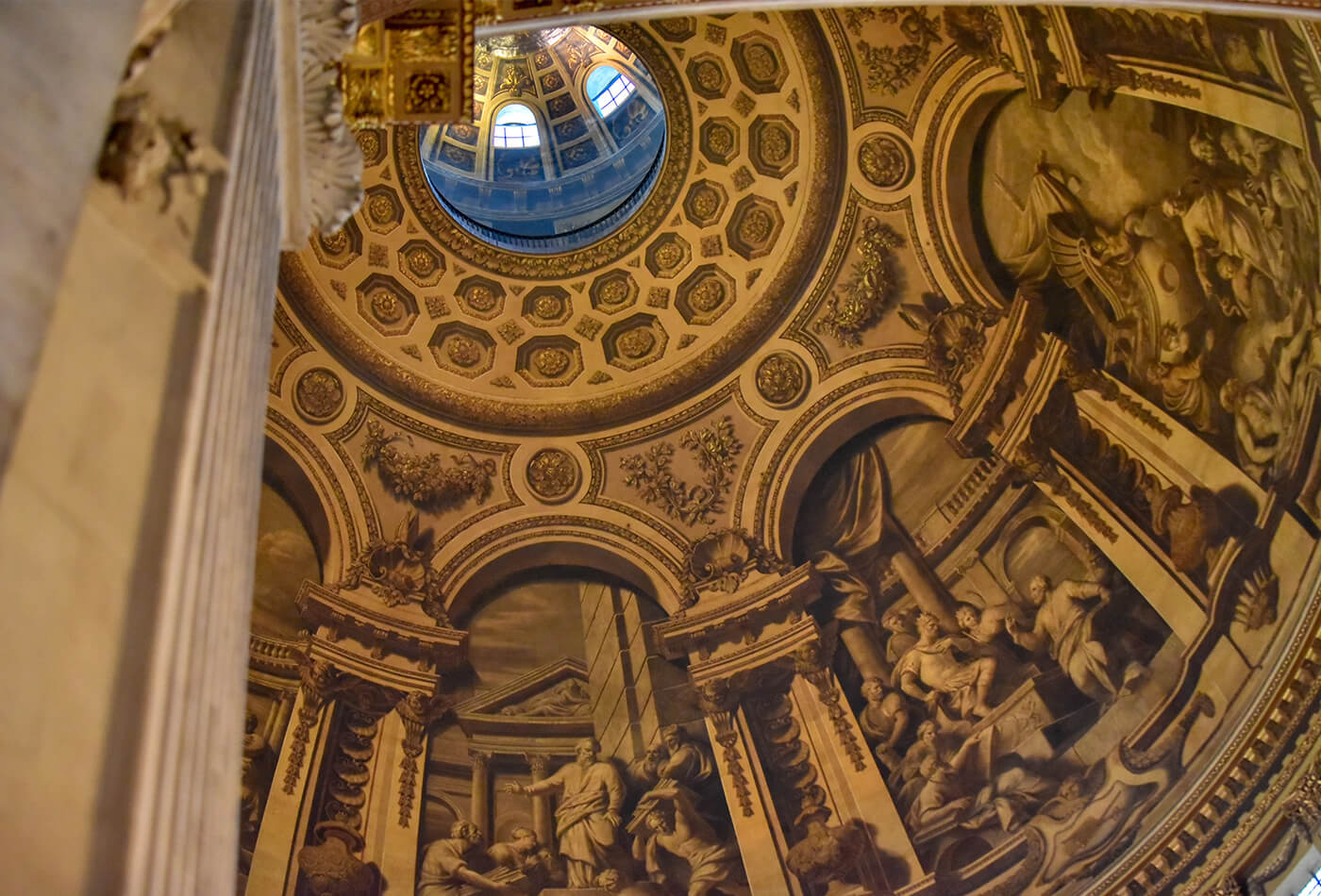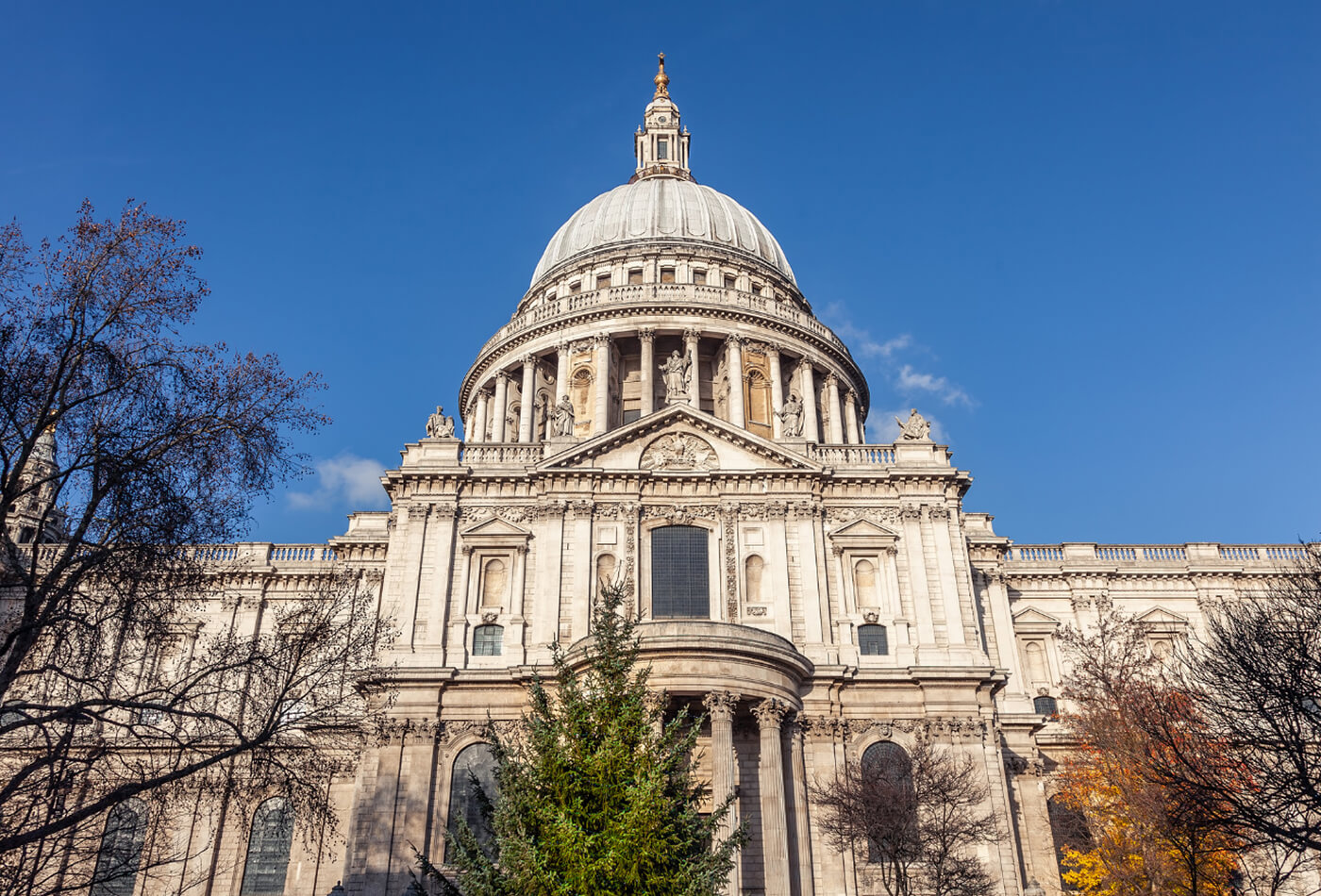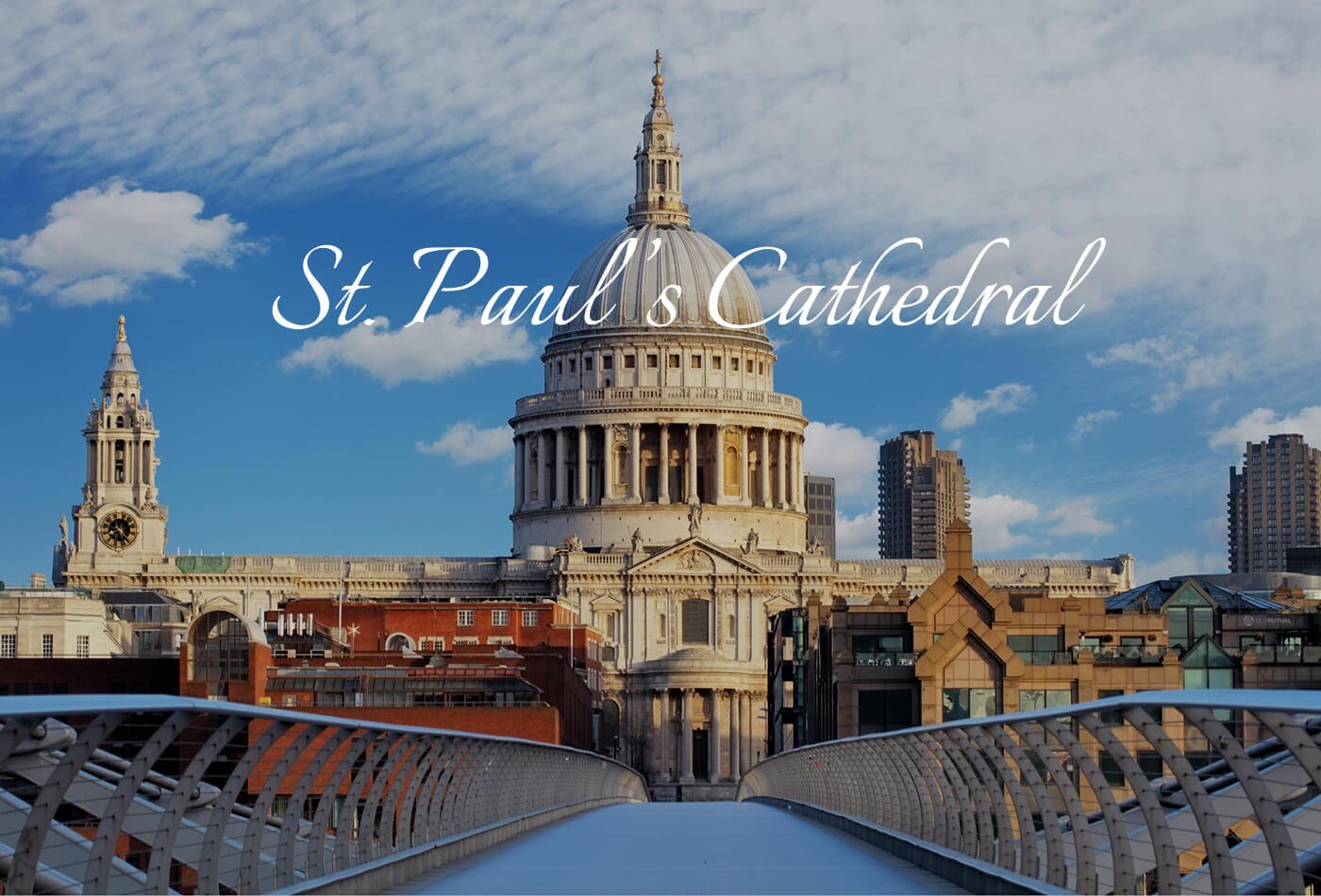Table Of Contents
Discover the awe-inspiring beauty of St. Paul's Cathedral, London's iconic architectural masterpiece. Immerse yourself in centuries of history, marvel at the stunning dome, and explore the intricate artistry. A visit to St. Paul's is not just a journey through a historic landmark; it's an unforgettable experience of cultural and spiritual wonder. To know more facts about popular UK monuments, visit the magazine page. Contact us on 0330 113 5868 or write to us at info@work-tops.com to get expert assistance.
What Is The History Behind St. Paul's Cathedral?
St. Paul's cathedral, an architectural marvel in London, boasts a rich history dating back to 604 AD, with the current structure, designed by Sir Christopher Wren, completed in 1710 after the Great fire of London in 1666. This majestic building, constructed in the English Baroque style, replaced the previous Gothic cathedral destroyed by the fire. St. Paul's has played a significant role in British history, hosting notable events like the funerals of Lord Nelson and Winston Churchill, and the wedding of prince Charles and lady Diana spencer. It's renowned for its magnificent dome, one of the world's largest, and serves as a symbol of resilience and hope, having survived the blitz during world war II.
St. Paul's Cathedral Architecture

St Paul's Cathedral In London is an absolute architectural gem! Designed by the famous Sir Christopher Wren, it's a stunning example of the English baroque style. What catches your eye is its massive dome, one of the largest in the world, sitting proudly at 365 feet high – it's a real head-turner! The intricate design inside is just as breathtaking, with beautiful Mosaics, carved stone, and elegant ironwork.
The cathedral isn't just pretty; it's clever too! Wren used innovative techniques for its time, like the great model for the dome's structure. This iconic building has been a part of London's skyline since the late 17th century and has seen its fair share of history. Whether you're into architecture or love exploring beautiful places, Paul cathedral is a must-see. Its blend of grandeur and artistic detail is truly awe-inspiring!
LYDIA CLASSICO TRAVERTINE MOSAIC TILES
£55.50 Lydia Classico Travertine Mosaic Tiles are light-coloured stones in a beige-cream shade.Lydia Classico Travertine Tiles look good in a traditional as well as modern setting. They can be used indoors and outdoors. The tumbled and honed effect of this tile… read more |
ARABESCATO CORCHIA BOOKMATCH MARBLE
£630.42 Arabescato Corchia Bookmatch Marble is a coruscating white dazzling Marble stone with deep blue or grey veins that almost remind of spider webs. Arabescato Marble is polished to finesse and can be applied to many house applications like kitchen countertops,… read more |
GREEN MOSAIC ONYX
£516.50 Green Mosaic Onyx is a unique mosaic-like slab that looks like image collage of numerous picture frames. The slab has maximum of green tone mingled with beige, cream, orange and other colours. As with other onyx stones, Green Mosaic Onyx… read more |
Paul Cathedral Building Facts
St Paul's cathedral in London is a masterpiece with some cool facts! First off, it's old - like, ancient. There's been a church on this site since 604 AD. Sir Christopher Wren, a superstar architect of his time, designed it after the great fire of London in 1666.
Now, the dome - it's enormous! It was the tallest building in London until 1962. If you're up for a workout, you can climb 528 steps to the top and get a fantastic view of London. Inside, you'll find the famous whispering gallery, where a whisper against the wall can be heard on the opposite side. Plus, it's been a spot for significant events - like royal weddings and funerals of famous brits. St. Paul's isn't just a church; it's a history of surprises!
Why Is Paul Cathedrals Special?

St Paul's Cathedral is unique for so many reasons! Its history is fascinating. The current building, designed by the fantastic sir Christopher wren, has been standing since 1710. It's a survivor, too – it made it through the great fire of London and even the blitz during World War II.
But it's not just about history; the architecture is mind-blowing. The cathedral's dome is one of the largest in the world, and it's a true masterpiece of design. The art, mosaic, and intricate whispering gallery are breathtaking inside.
St. Paul's isn't just a building; it's a symbol of London's resilience and spirit. It's hosted major events, like royal weddings and state funerals, making it a significant part of British culture. Visiting St. Paul's is like stepping into a piece of living history, and that's pretty special!
What Are The Architectural Features Of Paul's Cathedral?
St. Paul's in London is a true architectural wonder! Its design is a stunning example of the English baroque style, one of its most eye-catching features is its massive dome, which is huge but also beautifully detailed. It's among the most giant domes in the world and has an iconic shape recognizable anywhere.
But wait, there's more! The cathedral's façade is adorned with two towers and a magnificent portico with Corinthian super impressive columns. Inside, you'll be wowed by the intricate grand arches, and the exquisite detailing on the stone and woodwork.
Don't forget the Whispering Gallery – a magical place where your whispers can be heard clearly on the other side of the dome. How cool is that? St. Paul's Cathedral is not just a church; it's a masterpiece of design and a feast for the eyes!
What Materials Is St Paul's Cathedral Made Of?

Paul's Cathedral in London is made of sturdy stuff called stone! The primary material used is Portland stone, a high-quality limestone from Dorset, England. This stone is strong and has a lovely light grey colour that gives the cathedral its distinctive and elegant appearance. It's a popular choice for many of London's historic buildings.
Inside, you'll find other materials that add to the cathedral's beauty. The floors, for example, are adorned with beautifully patterned Marble. The intricate mosaics that decorate the ceilings and walls use a variety of coloured stones and glass, creating stunning visual effects.
And let's not forget about the metalwork! The cathedral features ornate ironwork, including railings and gates, adding to the grandeur of the interior. All these materials come together to make St. Paul's Cathedral not just a building but a work of art that has stood the test of time!
JURA GELB LIMESTONE
£296.17 Jura Gelb Limestone is famous for its prominent yellow shades and odd geological characteristics. The Jura Mountains, which belong to areas in France, Switzerland, and Germany, are where it is quarried. With slight variations in tone and shade, the colour… read more |
ROMA BROWN TRAVERTINE
£357.18 Roma Brown Travertine features nude shades of colours like light brown, cream and beige that can be seen as veins running from one end of the slab to another. Travertine as raw material is very porous in nature. If the… read more |
ESKI BEIGE LIMESTONE
£263.35 Eski Beige Limestone is a natural stone extensively used in construction and design. That is primarily mined in Turkey and can also be referred to as Eski Bej Limestone. As Eski Beige Limestone is recognized for its rich and natural… read more |
Conclusion
In conclusion, St Paul's Cathedral is not just a magnificent building but a symbol of London's rich history and architectural brilliance. From its storied past to its stunning Baroque design by Sir Christopher Wren, this iconic landmark captivates all who visit.
Frequently Asked Questions
-
Who Designed St. Paul's Cathedral?
Sir Christopher Wren, a renowned English architect, designed St. Paul's Cathedral. He was appointed to rebuild the cathedral after the Great Fire of London in 1666.
-
When Was The Current St. Paul's Cathedral Completed?
The current St. Paul's was completed in 1710. It took about 35 years to build, starting after the Great Fire of London.
-
What Architectural Style Is St. Paul's Cathedral?
St Paul's Cathedral is a prime example of English Baroque architecture. This style is known for its grand scale, dramatic use of light and shadow, and ornate details.
P.s. The readers are informed that none of the content available on any of the pages of Work-tops.com should be taken as legal advice and that Work-tops will not be held accountable for your use of the information contained in or linked from these web pages.




